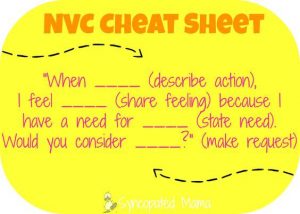If you’ve been recently charged with domestic violence, your life could become quite complicated very quickly, especially if convicted. However, this time can also be a teaching moment—an opportunity to step back from this dark chapter and learn a more productive way of thinking and communicating.
The reasons why we humans sometimes turn to violence and aggression are too numerous and complex to explain here—nor are we qualified to delve into the psychology behind it. However, as the University of Michigan points out, domestic violence typically occurs as a repeating cycle, one that begins with a breakdown of communication. It naturally follows that if couples can create meaningful channels of communication, the cycle of domestic violence may be interrupted. The problem in many cases is that one or the other partner doesn’t understand the best ways to communicate—and the resulting frustration may erupt into aggression.
In the 1960s, an American psychologist named Marshall Rosenberg—himself a domestic violence victim from childhood—developed a process called Nonviolent Communication. The underlying theory behind this approach is that humans are innately compassionate, and violence is a learned behavior that develops from the inability to communicate needs effectively. Rosenberg utilized these principles quite effectively as a mediator to diffuse tensions between rioting college students and college administrators in the turbulent ’60s, as well as in peacemaking efforts during the desegregation process of the civil rights era. Since those days, many have utilized these principles to learn to communicate more compassionately and effectively.

























